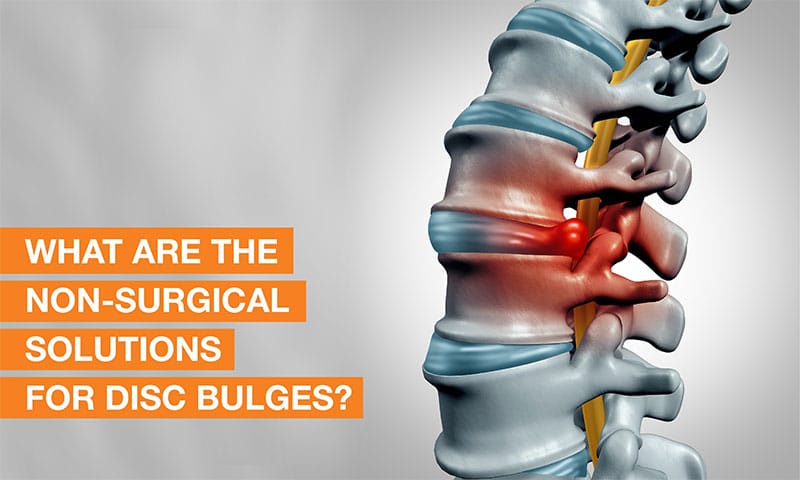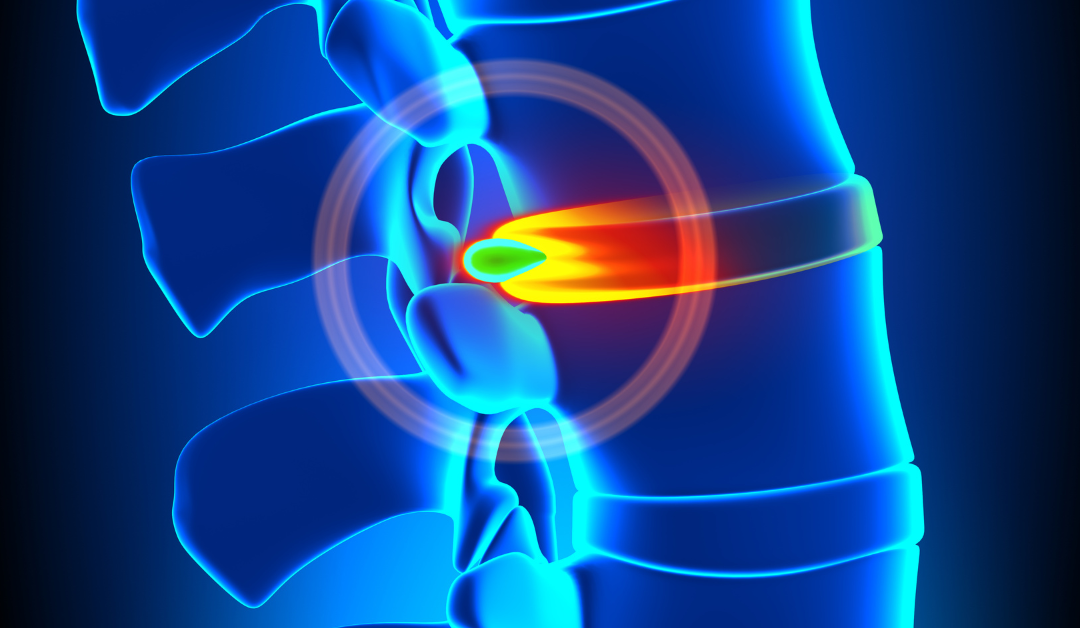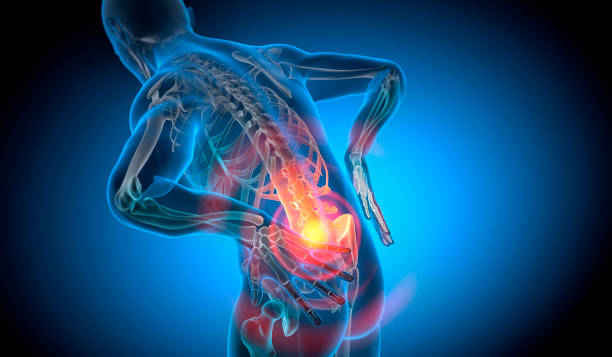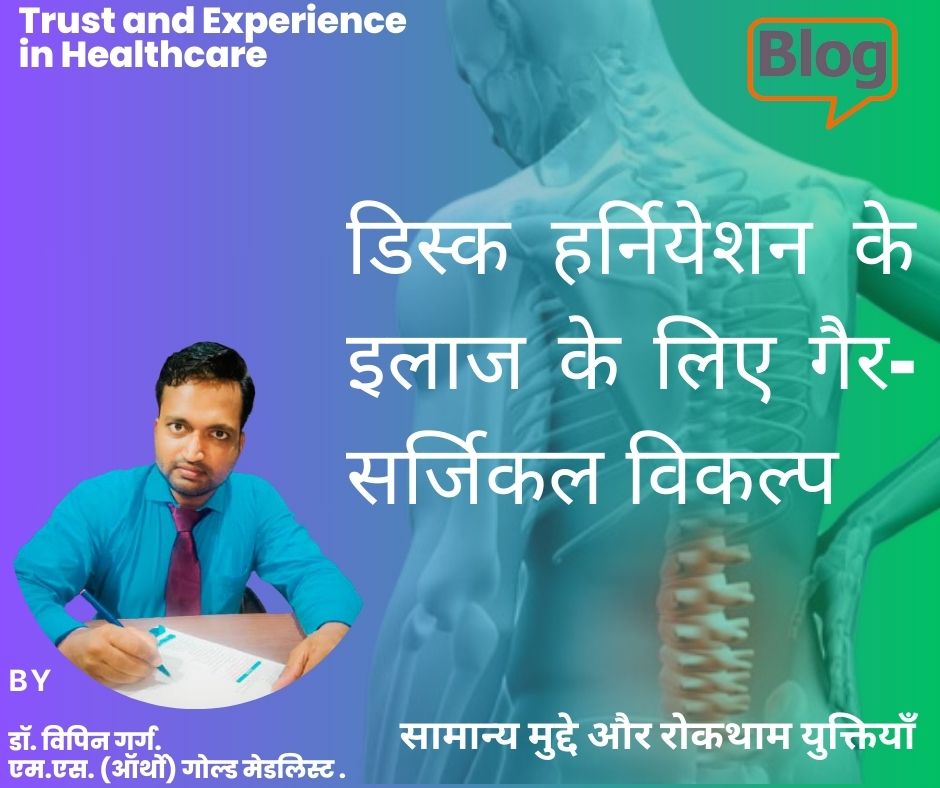Non-Surgical Alternatives for Treating Disc Herniation: Disc herniation, often referred to as a slipped or ruptured disc, is a common condition that can cause significant pain and discomfort. While surgery is sometimes necessary, many individuals can find relief through non-surgical alternatives. This blog will explore various non-surgical treatments for disc herniation, providing valuable insights and guidance. Additionally, we will highlight the expert care available at KLM Group, led by the esteemed Dr. Vipin Garg. We can see more details about “Non-Surgical Alternatives for Treating Disc Herniation” in this blog.

Understanding Disc Herniation
Anatomy of the Spine
The human spine consists of 33 vertebrae, divided into cervical, thoracic, lumbar, sacral, and coccygeal regions. Between each pair of vertebrae lies an intervertebral disc, which acts as a cushion, providing flexibility and absorbing shock.
What is a Disc Herniation?
A disc herniation occurs when the soft inner core (nucleus pulposus) of an intervertebral disc pushes through a crack in the tougher outer layer (annulus fibrosus). This herniation can compress nearby nerves, leading to pain, numbness, or weakness, often in the lower back or neck.

Common Causes
Disc herniation can result from various factors, including:
- Aging: Discs lose water content and elasticity over time, making them more prone to herniation.
- Injury: Trauma from accidents or improper lifting can cause discs to herniate.
- Genetics: A family history of disc problems can increase the risk.
- Degenerative Disc Disease: Chronic wear and tear can lead to herniation.
Symptoms of Disc Herniation
Lumbar Disc Herniation
- Lower Back Pain: Often radiates to the buttocks, thighs, or legs (sciatica).
- Numbness or Tingling: Usually in the legs or feet.
- Weakness: In the legs, making it difficult to walk or stand.
Cervical Disc Herniation
- Neck Pain: Can radiate to the shoulders, arms, or hands.
- Numbness or Tingling: Typically in the arms or hands.
- Weakness: In the arms or hands, affecting grip strength.
Non-Surgical Alternatives for Treating Disc Herniation
Physical Therapy
Physical therapy is one of the most effective non-surgical treatments for disc herniation. A physical therapist can design a personalized exercise program to strengthen the muscles supporting the spine, improve flexibility, and alleviate pain. We can find more details about “Non-Surgical Alternatives for Treating Disc Herniation” in this blog.

Types of Physical Therapy
- Exercise Therapy: Specific exercises to strengthen the core muscles, improve posture, and enhance flexibility.
- Manual Therapy: Hands-on techniques to reduce pain and improve mobility.
- Heat/Ice Therapy: Application of heat or ice to reduce inflammation and pain.
Medications
Medications can help manage pain and inflammation associated with disc herniation. Over-the-counter options include nonsteroidal anti-inflammatory drugs (NSAIDs) like ibuprofen or naproxen. In some cases, prescription medications may be necessary. We can check more details about “Non-Surgical Alternatives for Treating Disc Herniation” in this blog.
Types of Medications
- Pain Relievers: NSAIDs, acetaminophen.
- Muscle Relaxants: To reduce muscle spasms.
- Nerve Pain Medications: Such as gabapentin or pregabalin.
- Corticosteroids: Oral or injectable to reduce inflammation.
Chiropractic Care
Chiropractic care involves spinal manipulation and adjustments to improve spinal alignment and reduce pain. Chiropractors use controlled force to adjust the spine, aiming to relieve pressure on the affected disc and nerves.
Benefits of Chiropractic Care
- Pain Relief: Reduces pressure on nerves and alleviates pain.
- Improved Mobility: Enhances spinal function and flexibility.
- Non-Invasive: Avoids the need for surgery.
Acupuncture
Acupuncture is an ancient Chinese therapy that involves inserting thin needles into specific points on the body to stimulate energy flow and reduce pain. It is believed to help relieve pain by releasing endorphins and improving blood flow. We can like more details about “Non-Surgical Alternatives for Treating Disc Herniation” in this blog.

Benefits of Acupuncture
- Pain Reduction: Effective for managing chronic pain.
- Minimal Side Effects: Generally safe when performed by a trained practitioner.
- Complementary Therapy: Can be used alongside other treatments.
Epidural Steroid Injections
Epidural steroid injections involve injecting corticosteroids into the epidural space around the spinal cord to reduce inflammation and pain. This treatment is often used for individuals with severe pain that does not respond to other conservative treatments.
Benefits of Epidural Steroid Injections
- Pain Relief: Provides significant pain relief for many patients.
- Reduced Inflammation: Targets inflammation directly at the source.
- Quick Procedure: Minimally invasive with a short recovery time.
Lifestyle Modifications
Making certain lifestyle changes can help manage symptoms and prevent further disc herniation.
Important Lifestyle Modifications
- Weight Management: Maintaining a healthy weight reduces pressure on the spine.
- Ergonomics: Using ergonomic furniture and practicing good posture.
- Regular Exercise: Staying active to strengthen the spine and improve overall health.
- Avoiding Smoking: Smoking can accelerate disc degeneration.
Yoga and Stretching
Yoga and stretching exercises can improve flexibility, reduce pain, and enhance overall spinal health. Poses that focus on stretching the back, hamstrings, and hips can be particularly beneficial. We can see and get more details about “Non-Surgical Alternatives for Treating Disc Herniation” in this blog.

Benefits of Yoga
- Flexibility: Increases range of motion and reduces stiffness.
- Strength: Builds core strength to support the spine.
- Stress Reduction: Promotes relaxation and reduces stress, which can exacerbate pain.
Heat and Cold Therapy
Applying heat or cold to the affected area can help reduce pain and inflammation. Heat therapy relaxes muscles and improves blood flow, while cold therapy numbs the area and reduces swelling.
How to Use Heat and Cold Therapy
- Heat Therapy: Use a heating pad or warm towel for 15-20 minutes.
- Cold Therapy: Apply an ice pack wrapped in a cloth for 10-15 minutes.
Massage Therapy
Massage therapy can help relieve muscle tension, improve blood flow, and reduce pain associated with disc herniation. Different techniques, such as deep tissue massage or trigger point therapy, can be used based on individual needs.

Benefits of Massage Therapy
- Pain Relief: Reduces muscle tension and alleviates pain.
- Relaxation: Promotes overall relaxation and well-being.
- Improved Circulation: Enhances blood flow to the affected area.
Expert Care at KLM Group
Dr. Vipin Garg
Dr. Vipin Garg is a highly respected orthopedic specialist with extensive experience in diagnosing and treating spine-related conditions, including disc herniation. He leads the KLM Group, a multidisciplinary team dedicated to providing comprehensive care for individuals with spine issues. Dr. Garg and his team offer a personalized approach to treatment, ensuring that each patient receives the best possible care. Address Link: https://g.page/r/CQ0WqKLEXPWeEAE Powered By Argusdna Also for the best, Orthopedic doctor and surgeon in Kolkata visit www.bonedoctorgautam.com
Services Offered by KLM Group
- Diagnostic Evaluations: Utilizing advanced imaging and diagnostic techniques to accurately diagnose disc herniation and other spine-related conditions.
- Physical Therapy: Personalized rehabilitation programs designed to strengthen the muscles around the spine and improve flexibility.
- Pain Management: Comprehensive pain management strategies, including medications, injections, and alternative therapies.
- Minimally Invasive Procedures: Offering minimally invasive options for patients with severe symptoms.
- Patient Education: Providing resources and education to help patients understand their condition and make informed decisions about their treatment.
Success Stories
The KLM Group has a track record of successful outcomes in treating disc herniation. Many patients have experienced significant pain relief and improved quality of life through personalized treatment plans. Testimonials from satisfied patients highlight the compassionate care and expertise of Dr. Vipin Garg and his team.

Conclusion
Disc herniation can be a debilitating condition, but many individuals can find relief through non-surgical alternatives. Physical therapy, medications, chiropractic care, acupuncture, epidural steroid injections, lifestyle modifications, yoga, heat and cold therapy, and massage therapy are all effective options for managing symptoms and improving quality of life.
If you are experiencing symptoms of disc herniation, seeking expert care is crucial. The KLM Group, led by Dr. Vipin Garg, offers comprehensive, personalized treatment plans to help you manage your condition and achieve optimal spine health. Contact the KLM Group today to schedule a consultation and take the first step towards a pain-free life.
Contact KLM Group:
Book Your Consultation
- Website: https://tinyurl.com/yyzvwmck
- Email: info@klmgrou p.org
- Ph: 0751-4000721,Mob: 7804826825
- Address: 12, Saraswati Nagar, University Road, Near Silver Estate, Thatipur,
By choosing the KLM Group, you can rest assured that you are in the hands of experienced professionals dedicated to your well-being and recovery.

